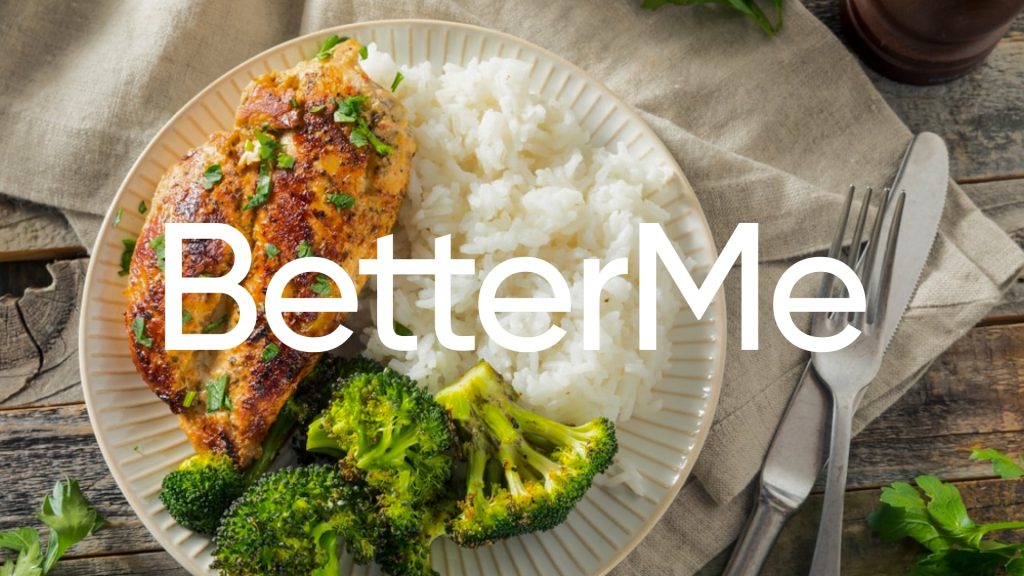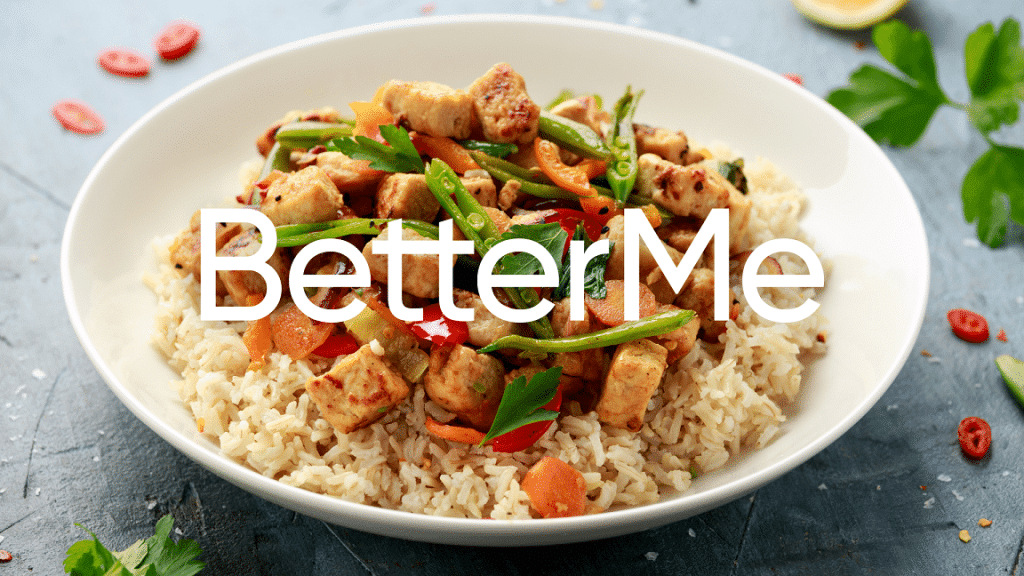Like the discussions on bread and pasta, there have been numerous debates both online and offline about the effect of rice on weight. You might have seen some questions on this, for example, “is rice fattening?” You may think that rice causes weight gain while others have the opposite belief and vice versa. All the various debate topics have resulted in sparking numerous myths and misconceptions about the number of calories in rice.
The reality is that like any other cereal, rice too contains calories. That being said, the amount of calories and other nutrients differs based on the type or variety of rice you select. Currently there are so many varieties of rice, for example, black, white, brown, basmati, arborio and jasmine.
This means that the different levels of calories in each of these varieties will influence the answer to whether the rice you pick is a healthy choice or not. In addition to this, other factors such as how much you eat and how you prepare your rice will also be a factor in your weight maintenance.
For example, someone eating two servings of fried rice will likely contribute more to weight gain than if the rice was boiled or steamed without added oil, due to the preparation method used. In this article, we will examine if rice is indeed fattening as well as what varieties are more likely to cause weight gain if consumed in excess.
Read More: Rice Diet: Can This Delicious Food Help You Hit Your Dream Body Goals?
Fascinating Facts About Rice
Rice is among the most common foods in most countries, with some countries having it as its main staple. This grain comes from the seeds of a grass-like plant that typically grows in water. It has been grown for over 8,000 years. Throughout this period of time, people have learned various ways of cooking it.
This might help to explain the numerous rice recipes you can find today. In Latin, this cereal grain is from Oryza sativa. However, most people around the world merely refer to it as rice. Here are some other interesting pointers you may not know about this cereal grain:
- An estimated one half of the global population gets 50% of their calories from this grain (5). Without it, a significant percentage would end up missing out on some needed nutrients and calories.
- Rice has numerous varieties. They range from brown rice, arborio, white, basmati, black and jasmine. The variety you pick should depend on the nutritional value you want, flavor and your dietary goals.
For example, you may choose basmati rice due to its strong flavor or brown rice due to its fiber for weight loss promotion.
- Rice grains do not precisely have to be white. They can be brown, purple, black or red. It all depends on the pigments they naturally contain in the outer layer.
White Rice
White rice is the most popular type of rice all over the world. You can hardly miss this type of rice in any of the various food outlets across the globe. White rice can be cooked as it is or can be used in a processed form for preparation with other ingredients. These include rice flour, rice syrup, rice milk and rice bran oil.
White rice is highly processed, meaning that it does not contain the germ or bran. Due to this excessive stripping of bran and germ, white rice tends to cook faster. It also tends to have a long shelf life and a better taste (11). However, that process strips it of its nutritional benefits. It still contains both proteins and carbohydrates, but no fiber or fat.
Pros And Cons Of Eating White Rice
Although brown rice has more health benefits than white rice, this does not take away the fact that white rice also has its advantages. White rice aids one in improving one’s gut health. It has soluble fiber known as resistant starch, which your gut bacteria ferment to form butyrate.
Butyrate has positive effects on your gut health by reducing inflammation. It also improves the functioning of your gut barrier and lowers your susceptibility to colon cancer.
However, eating too much white rice has several side effects. First and foremost, its high starch content can lead to weight gain, especially if you eat it and never exercise. Secondly, it has high glycemic levels which increases your blood sugar rather quickly after eating it. Therefore, it is not considered the best meal option for those who are diabetic.
White Rice Nutrition Analysis
If you eat a 186 g cup of cooked white rice, your nutritional analysis chart will be as follows:
- Total fat- 0.39 g
- Protein- 4.43 g
- Energy- 242 kcal
- Total carbohydrate- 53.2 g
- Fiber- 0.56 g
One cup of cooked white rice also provides you with the following minerals and vitamins:
- Iron- 2.8 mg
- Niacin- 3.4 mg
- Zinc- 0.8 mg
- Vitamin B6- 0.1 mg
- Thiamin- 0.3 mg
- Phosphorus- 68.8 mg
- Folate- 108 mcg
- Selenium- 14 mcg
- Manganese- 0.7 mg
- Copper- 0.1 mg
If you struggle to even flirt with the idea of giving up your favorite foods or working out till your legs give way – BetterMe app is here to breathe a fresh perspective into the way you view the weight loss process! Check out the app and experience the fun side of fitness and dieting with BetterMe!
Brown Rice
Brown rice also ranks among the top rice types around the globe. Unlike white rice, brown rice does not undergo numerous processing stages to have it refined. Therefore, it tends to be more of whole grain. This means it contains both the germ and bran, both of which have antioxidants, fiber, minerals and vitamins.
Brown rice can also come in purple, red or black shades. It is also gluten-free and has a lower glycemic index. Its slower impact on blood sugar makes it a better choice for those with diabetes. Remember to always cross-check the labels on your brown rice when you are purchasing it.
The Benefits Of Eating Brown Rice
Aside from providing fiber, vitamins and minerals, brown rice also helps with the following:
-
Preventing Cancer And Diabetes
Along with fiber, brown rice also contains ferulic acid, lignans, phytic acid and phytoestrogens that may protect your body against diabetes (1). This is in contrast with white rice which undergoes too much refining, which tends to remove all the components that reduce diabetes risk.
The ferulic acid has antimicrobial and anti-inflammatory properties that help in protecting you against diabetes and various cancers.
-
Improving Your Heart Health
Like any other whole grain, brown rice has various benefits to your heart health. First and foremost, it has heart-healthy compounds like lignans and antioxidants.
Secondly, eating more whole grains may improve your blood cholesterol levels, which helps in reducing your risk of cardiovascular diseases. The low blood cholesterol levels also reduce your susceptibility to stroke, obesity and type 2 diabetes.
-
Boosting Metabolism
Brown rice also contains a mineral known as manganese, which plays a role in your metabolism. Additionally, manganese is also an antioxidant and is essential for growth and development.
Brown Rice Nutritional Information
A 202 g cup of cooked brown rice provides you with the following (6):
- Fiber- 3.233 g
- Energy- 248 kcal
- Protein- 5.54 g
- Total carbohydrate- 51.7 g
- Total fat- 1.96 g
If it is one half-cup, then your nutritional information will display as follows:
- Calories- 108
- Fiber- 2 g
- Protein- 3 g
- Total carbohydrate- 22 g
- Total fat- 1 g
- Total sugars- 0 g
If you take one cup of brown rice you will receive the following minerals and vitamins:
- Iron- 1.1 mg
- Vitamin B6- 0.3 mg
- Thiamin- 0.4 mg
- Folate- 18.2 mcg
- Niacin- 5.2 mg
- Zinc- 1.4 mg
- Phosphorus- 208 mg
- Selenium- 11.7 mcg
- Manganese- 2.0 mg
- Copper- 0.2 mg
The Best Way To Cook Brown Rice
If you have never cooked brown rice before, then here are simple steps you can follow (2):
- Soak your rice some minutes before you cook it. Rinse it using cold water to drain any excess starch and dust.
- Pour your rice in a pot with water. For every one cup of brown rice you use, add 2 to 2 ¼ cups of water.
- Let the water boil. Cover your pot and then reduce the heat.
- Leave your rice to simmer for about twenty minutes before returning to switch off your heat source.
- Let the rice steam for an extra ten minutes before you serve it.
NOTE:
- You can also use your rice cooker to prepare brown rice. If you do, ensure you use the ratio of water to rice as if you are cooking on the stove. Similarly, ensure that your rice sits on warming mode between five and ten minutes to avoid stickiness.
- You can serve your brown rice alongside various stews and soups. You can have it with vegetables, beans, chicken, meat stew, tofu and so forth.
- The best way to cook rice for weight loss is boiling instead of frying. If trying to lose weight, you may want to avoid cooking methods that increase the fat (and therefore calorie) content in your meals.
Brown Rice Vs. White Rice: Which Is More Fattening?
Rice is generally a high carb and starchy food. Therefore, eating too much of it can make you add weight. Researchers conducted a study with Japanese factory workers to determine the effects of eating both white and brown rice within one year (9).
They found that participants who ate brown rice during that year maintained their weight. As such, experts suggest eating brown rice for weight management and control.
In contrast, they discovered that eating white rice within the same timeframe resulted in weight gain. The weight gain was more profound in individuals who did not exercise.
Read More: Brown Rice Diet: Why You Should Double Down On This Underappreciated Grain
Parboiled Rice
Parboiled rice refers to partially precooked rice, also known as converted rice. It is popular in some African and Asian countries. Parboiling the rice entails soaking, steaming and drying it while it is still in its inedible outer husk.
It means that you are not supposed to remove the husk before you prepare this special kind of rice. When you do all this, the rice inside the husk will automatically have a slightly yellow color. The process makes it easier to remove the husk before its consumption.
Similarly, you may also use this method when you want to improve the texture of this grain. If not, you can use the parboiling technique to get less sticky and fluffier rice.
The Nutritional Information
Here is the nutritional value of cooking a 155 g cup of parboiled long rice (8):
- Calories- 194
- Total carbohydrates- 41 g
- Total fat- 0.5 g
- Protein- 5 g
- Fiber- 1 g
Using this information, we can answer if this type of rice is fattening or not. Unlike the traditional white rice, the parboiled rice appears to have fewer calories. It also has fewer carbs but more protein and fiber.
Due to its fewer calories and carb intake, it is less likely that this type of rice will make you gain weight. However, this is only the case if you abide by the recommended servings. If you were to increase the number of cups you cook, you would consume more calories. Consequently, you would end up gaining extra weight due to the increase in the daily caloric intake.
The Health Benefits Of Eating Converted Rice
Besides enriched flavors, there is so much to gain from consuming parboiled rice. Some of these gains include:
-
Attaining Essential Nutrients
Regular consumption of parboiled rice gives you more than just fiber and protein. It is also rich in calcium and iron, meaning you get to acquire these two vital nutrients.
-
Improving Your Gut Health
Starch present in converted rice acts as a prebiotic. It means that it is more of a nutrient that boosts the growth of healthy bacteria in your gut.
The healthy bacteria help in bringing balance to the microorganisms in your gut. They are responsible for several things, including regulating/improving your mood and health.
-
Reducing The Symptoms Of Diabetes
Diabetes has become quite prevalent in our societies. Sometimes people ailing from this disease are advised to eat parboiled rice. Unlike the white or brown rice, this rice may have less of an impact on your blood sugar levels.
As a result, it helps in reducing the symptoms experienced by diabetic people. Remember to refrigerate your leftover converted rice. Storing it at low temperatures may help in further reducing its impact on your blood sugar levels.
Jasmine Rice
Jasmine rice is one of the most aromatic rice varieties. You perhaps may know it as Thai fragrant rice (10). It is quite unique because this long-grain rice is roughly four times as long as its width. Again, its uniqueness arises from its different colors.
It can be white, brown, purple, black or red. All these varieties provide different nutritional values. So, evaluate the nutritional content of each before consuming it. The white variety is quite common and massively processed, resulting in nutritional similarities typical with white rice.
Nutritional Information
Cooking a 1/4 cup of brown jasmine rice provides you with the following nutrients:
- Calories- 160
- Cholesterol- 0 g
- Fiber- 2 g
- Total fat- 1 g
- Sodium- 0 g
- Total sugar- 0 g
- Total carbohydrates- 35 g
- Protein- 3 g
Brown jasmine rice has very few calories. It is incapable of fattening you if you just stick to cooking the suggested serving.
Advantages Of Eating Jasmine Rice
In addition to getting fewer calories, regular consumption of this type of rice can also do the following:
-
Provide You With Minerals And Vitamins
Brown jasmine rice is like any other whole grain rice. It is rich in various vitamins and minerals. These include vitamin B6, phosphorus, manganese, vitamin B1, selenium and magnesium (7).
-
Improve Your Immunity
The red, blue and purple jasmine rice varieties contain phytonutrients. These phytonutrients are helpful in protecting your body cells, which may boost your immunity.
An improved immune system leads to better overall health due to increased protection against germs, bacteria and other health risk factors.
-
Promote Your Health During Pregnancy
Jasmine rice is rich in folic acid. Experts acknowledge that folic acid promotes healthy pregnancies, primarily if it is taken before pregnancy or during the first trimester. It also reduces risks of birth and neural tube defects.
-
Improve Your Digestive Health
The brown variety of jasmine rice contains more fiber compared to the white version. It means that the brown variety is less processed, which also means its nutrients and fiber are left intact. Fiber in this rice helps in normalizing your bowel movements, further aiding in the maintenance of your digestive system.
Whether you’re a workout beast or just a beginner making your first foray into the world of fitness and dieting – BetterMe has a lot to offer to both newbies and experts! Install the app and experience the versatility first-hand!
Basmati Rice
When you compare basmati rice against, for example, white rice, chances are you will hardly spot any difference. This happens a lot when you place this rice alongside other rice varieties. However, when you use your sense of smell, you will be able to differentiate and identify basmati rice.
Basmati rice has a distinctive and aromatic smell that makes it stand out from other rice varieties. Its aromatic smell can be compared to that of popcorn after you cook it. This aromatic rice is a staple in India and Pakistan.
India contributes about 2/3 of the world supply of basmati rice (4). It has been cultivated in this country for many decades, which might explain why it is a staple there. Below are some other fascinating facts about this rice:
- It is referred to as the queen of perfumed rice. In Hindi, basmati rice is believed to mean “full of aroma”
- There are two varieties of basmati rice: brown and white. The two have nutty flavors and pleasant smells.
- The bran, hull and germ of the white basmati rice are removed. However, only the hull is removed in the brown basmati rice.
- After it is cooked, it does not stick together. It is because it contains a compound known as amylase which helps prevent this stickiness.
Benefits Of Regular Consumption Of Basmati Rice
Eating both brown and white basmati rice can provide you with these health benefits:
-
Increasing Your Fiber Intake
If you do not eat enough fiber, you are most likely to suffer from a digestive problem such as constipation. Basmati rice is rich in soluble fiber, which can help in taking care of this problem. The soluble fiber in this cereal increases bulk that helps in moving waste along your digestive tract. Brown basmati rice has more fiber than white basmati rice.
-
Managing Diabetes
If you are diabetic, then you may want to consider switching to basmati rice in your diet. It has a low or medium glycemic index ranging from 50 to 58, depending on how much of it you cook. Such an index can help in managing your diabetes. Nonetheless, seek medical advice before you add this food to your existing diet plan.
The Bottom Line
Rice is like any other food in your diet plan. It contains calories and this means that if you eat too much of it you will consume more calories. As a consequence, you certainly will add some pounds.
You can avoid this by regulating your rice portions. Similarly, you can take control of your weight by choosing healthier rice varieties and learning the best way to cook the type of rice you choose.
DISCLAIMER:
All the opinions in this article are not medical advice. Ensure you sit down with a professional before implementing any health suggestions in this piece.
SOURCES:
- Brown Rice vs. White Rice: Which Is Better? (2010, webmd.com)
- Brown Rice: Health Benefits, Nutrition Facts, and How to Prepare It (2020, webmd.com)
- Food guide plate (2020, medlineplus.gov)
- Health Benefits of Basmati Rice (2020, webmd.com)
- Health Benefits of Rice (2020, webmd.com)
- Is brown rice or white rice better for health? (2019, medicalnewstoday.com)
- Jasmine Rice: Is It Good for You? (2020, webmd.com)
- Parboiled Rice: Are There Health Benefits? (2020, webmd.com)
- Relationship between rice consumption and body weight gain in Japanese workers: white versus brown rice/multigrain rice (2018, cdnsciencepub.com)
- Rice: The Essentials (2020, webmd.com)
- What to know about rice (2020, medicalnewstoday.com)




















